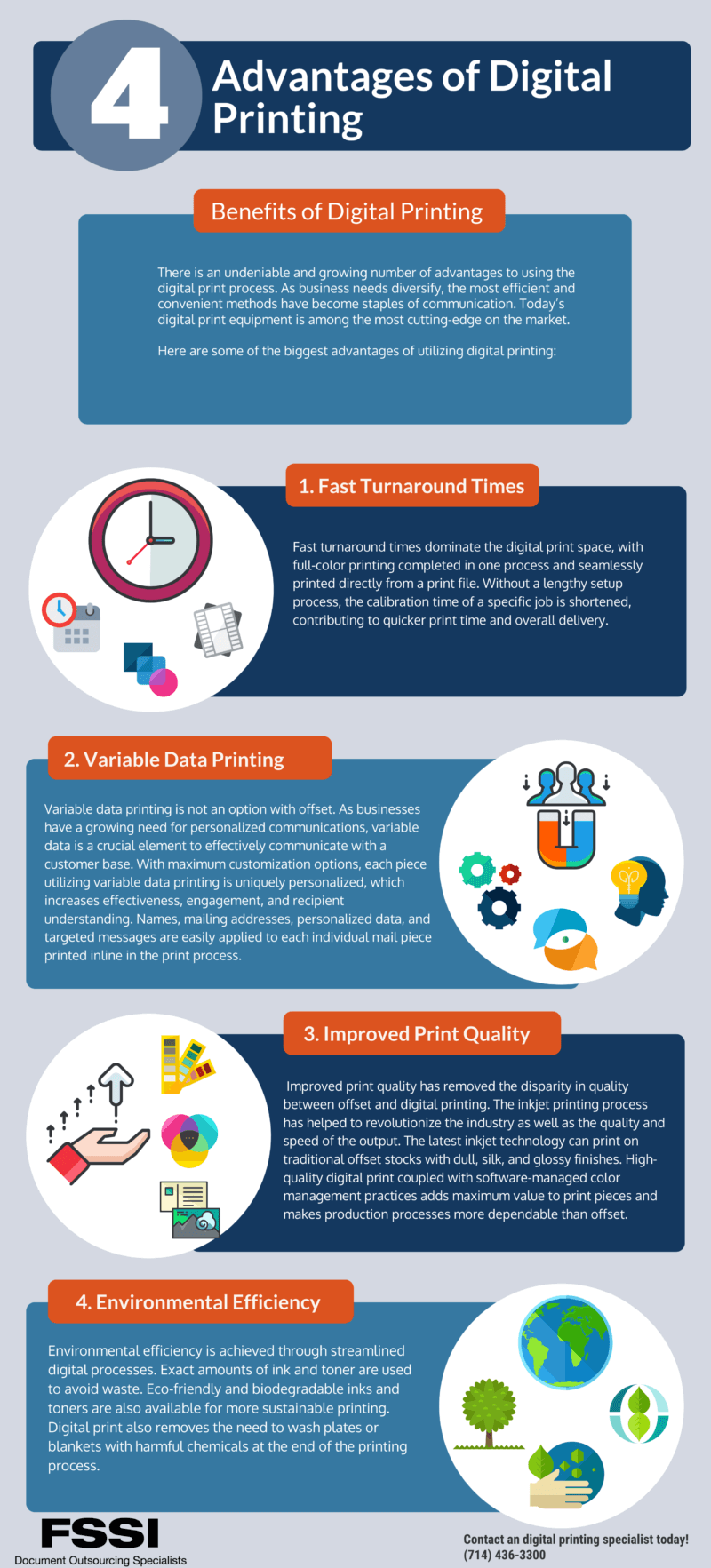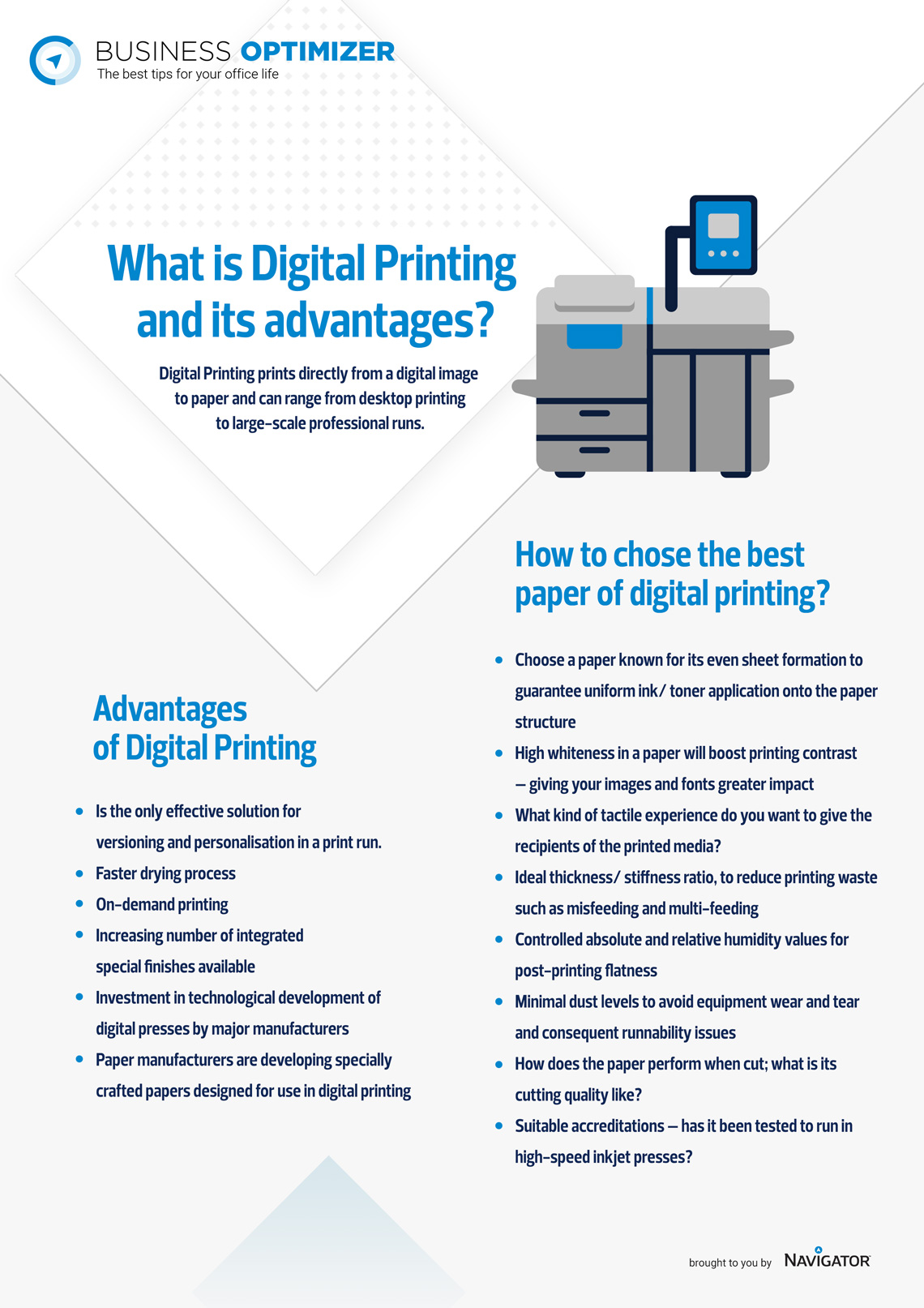Unknown Facts About Digital Printing
Unknown Facts About Digital Printing
Blog Article
Digital Printing Fundamentals Explained
Table of ContentsDigital Printing for DummiesThe Ultimate Guide To Digital PrintingThe 8-Second Trick For Digital PrintingThe smart Trick of Digital Printing That Nobody is Talking AboutThe 15-Second Trick For Digital PrintingThe Digital Printing Statements
Variable data printing, such as direct mail with customized codes and addresses, is ideally fit for electronic printing. Digital fast printing just needs 4 steps of design, testimonial, printing and binding to get every little thing done. Digital fast printing has an unparalleled advantage: print on demand.According to PMMI, digital printing allows brands and manufacturers to react promptly to consumer demands while boosting the supply chain, decreasing warehousing cost and waste, and taking pleasure in faster time to market. That all sounds wonderful, however how does this modern technology do all that? The major differentiator of these technologies is that there are no set up charges and no plates with electronic printing.
What Does Digital Printing Do?
According to Wikipedia, the biggest distinction in between digital printing and standard methods such as lithography, flexography, gravure, or letterpress - Digital Printing is that there is no demand to change printing plates in electronic printing, whereas in these analog printing techniques the plates are continuously replaced. This results in quicker turn-around time and lowers price when making use of digital printing.
Quick manufacturing suggests getting your item to market faster. It likewise suggests it's less complicated and faster to make adjustments later on, when you alter a dish, include a SKU, or create seasonal product packaging. Digital printing is highly versatile, so it's simple to make adjustments to the plan layout promptly. All of it returns to home plates.
More supply can imply more waste in the future. With conventional printing techniques, short-run printing is just not possible. Due to the fact that a fantastic design can make or break your product, digital printing constantly develops top notch, clear and colorful graphics each time. Digital printing on flexible pouches includes the intense, vivid, and exact graphics that virtually beckon consumers to get to out and touch them.
Digital printing is the process of printing digital-based images directly onto a selection of media substrates. There is no requirement for a printing plate, unlike with balanced out printing. Digital documents such as PDFs or desktop computer publishing documents can be sent out straight to the digital printing press to print on paper, photo paper, canvas, textile, synthetics, cardstock and various other substratums.
Not known Incorrect Statements About Digital Printing
According to PMMI, electronic printing enables brand names and producers to react rapidly to consumer needs while enhancing the supply chain, lowering warehousing cost and waste, and enjoying faster time to market. That all sounds wonderful, but exactly how does this modern technology do all that? The major differentiator of these modern technologies is that there are no set-up costs and no plates with digital printing.
This results in quicker turnaround time and reduces price when using digital printing.

Not known Details About Digital Printing
With traditional printing techniques, short-run printing is simply not possible. Since an excellent layout can make or break your item, electronic printing consistently creates top notch, clear and vivid graphics each time.

According to PMMI, electronic printing permits brand names and makers to respond rapidly to customer needs while improving the supply chain, reducing warehousing cost and waste, and enjoying faster time to market. That all sounds fantastic, but just how does this modern technology do all that? The major differentiator of these technologies is that there are no set up costs and no plates Recommended Site with digital printing.
The Ultimate Guide To Digital Printing
According to Wikipedia, the biggest difference in between digital printing and traditional approaches such as lithography, flexography, gravure, or letterpress is that there is no requirement to replace printing plates in digital printing, whereas in these analog printing approaches home plates are repeatedly changed. This leads to quicker turnaround time and reduces expense when making use of electronic printing.
Fast production means getting your item to market faster. It likewise suggests it's much easier and faster to make changes in the future, when you transform a recipe, include a SKU, or develop seasonal packaging. Digital printing is highly flexible, so it's simple to make adjustments to the bundle layout swiftly. Everything goes back to the plates.

What Does Digital Printing Do?
Digital printing is the procedure of printing digital-based look at this website images straight onto a selection click this link of media substratums. There is no requirement for a printing plate, unlike with countered printing. Digital files such as PDFs or desktop computer posting files can be sent out directly to the electronic printing machine to publish theoretically, picture paper, canvas, material, synthetics, cardstock and other substrates.
Report this page